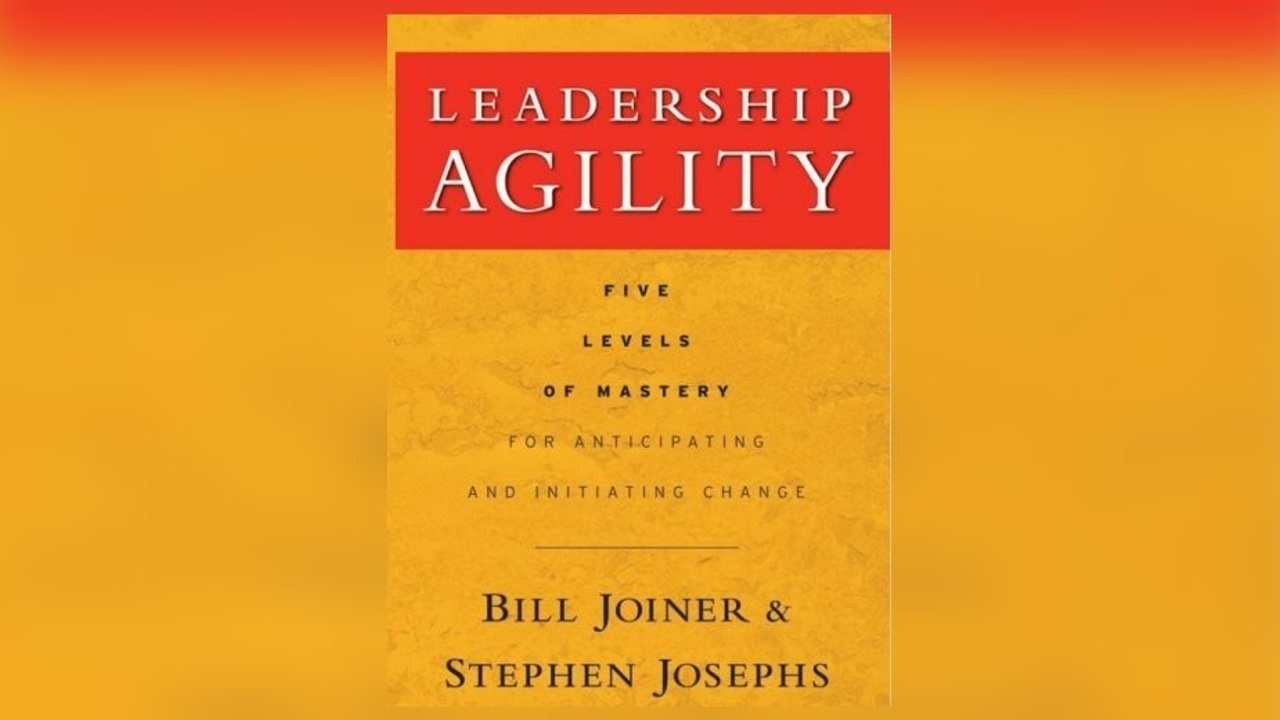How Great Change Leaders use Stakeholder Agility

In today’s business environment, leading change has become an integral part of a manager’s job. It’s also become more challenging. One of the biggest challenges is gaining sustained commitment from those whose support is needed to be successful. This post is about a particular kind of leadership agility that's needed to lead change effectively: “stakeholder agility.” What is it? What practical advice can we glean from research on how highly agile leaders use this capability?
Stakeholder awareness
Stakeholder agility has two components that work together. Leaders need to hone both of them. The first is “stakeholder awareness.” If we have a clear vision of the change we want to lead, it’s tempting to jump right in. After all, we need to move quickly in today’s world, right? Right … and if our project’s going to have the impact we want, we will inevitably need the support of other people and groups. Very few changes can be made by yourself alone and truly succeed.
So, how to gain the s...
How to Gain Leaders' Commitment to BEING Agile

If you're an Agilist who works with leaders at any level, you know that business agility requires leaders to do more than adopt Agile methods. True organizational agility won't come about unless leaders themselves become more agile and develop a culture that welcomes and supports agility. This can be a heavy lift for Agilists working with leaders who have been told to be agile, but don't have a clear picture of what agile leadership really looks like. How can you gain leaders' commitment to be coached to embody greater agility?
Many Agilists have found that the unique insights of the Leadership Agility framework its methodologies are extremely well-suited for this purpose. ChangeWise, creator of this framework, has developed two leadership assessment processes that Agilists are using to create robust, shared coaching agendas with the leaders they support: The Leadership Agility 360 and the Leadership Agility Accelerator. Some key features of these two assessment methods are outlined b...
Three Levels of Agility when Leading Management Teams

In today’s companies, at the senior and middle management levels, groups of direct reports are often called “teams.” Yet, quite frequently, they either don’t function as true teams, or they don’t engage in the level of teamwork needed to optimize their performance.
While there are a number of factors that influence the quality of teamwork, the intensive, multi-year research project conducted for our book, Leadership Agility, revealed that it is closely linked to the "level of agility" of the team's leader. In our work with leaders and their teams, understanding a team leader's agility level and how to help them raise it has proven enormously useful.
What are the three levels of team leadership agility?
The Expert Team Leader Mindset
We found that approximately 45% of managers view their direct reports with an “Expert” mindset. This mindset, which is more tactical than strategic, carries the implicit assumption that the job of a leader is to use one’s authority and expertise to sol...
High Quality 360 Feedback – Changing mindsets

This post is about how to work with leaders to create a powerful coaching agenda following 360 feedback, an agenda that identifies leadership behavior your client wants to practice, as well as the shift in mindset that will support this practice.
In an article published in Forbes, leadership expert Kevin Cashman reported quantitative research findings based a large sample size of managers and companies. This research clearly established that companies who had managers with higher levels of self-awareness performed better financially than companies whose managers had lower self-awareness. Wow! How to act on this knowledge?
Theoretically, a primary way to increase self-awareness in a company’s leaders is to give them 360 feedback. Possibly. But it really depends on how the 360 process is designed and implemented. I’ll say it bluntly: Instituting a 360-feedback process and leaving participants alone to become “self-aware” and interpret and act on the feedback (which some companies still...
How to Practice the Art of Stepping Back

Being absorbed in our work is a good thing in many ways, certainly better than feeling disengaged or distracted. Getting into the flow of our daily tasks is energizing. It helps us get our work done with a certain degree of efficiency and effectiveness.
At the same time, we are so busy – going from meeting to meeting, email to email, emergency to emergency – we can easily lose the larger perspective, fall into automatic reactions, and miss opportunities to be truly proactive. An IT Director who attended one of our Leadership Agility Change Labs told us that she was a key leader in a change initiative that was foundering, because they had not adequately engaged with the project’s stakeholders. At the time, they felt they didn’t have time for real stakeholder engagement. But plunging ahead had caused even more delay in the project. It had also reinforced a siloed culture and already strained relationships.
Even when leaders make an effort to secure stakeholder buy-in, they can...
Perspective-taking as a Leadership Practice

"Perspective taking" is the ability to view a situation from another person’s (or group’s) perspective. In the Leadership Agility framework, this psychological term is translated into a more practical one, relevant to leadership: Stakeholder understanding. As we know, how a leader manages their stakeholder relationships is central to the success of any change initiative they undertake. And how well a leader understands various stakeholder perspectives on their initiative is key to gaining their alignment and support.
Stages of development in perspective-taking capacity
The Leadership Agility framework identifies the three "levels" of leadership agility most relevant for today's organizations: Expert, Achiever, and Catalyst. This is a sequence of developmental stages. For example, research has shown that it’s not until around age 6 that we begin to realize that others experience objects from a different physical perspective than we do. It’s not until pre-adolescence that it dawns on ...
3 Questions for Framing Change Initiatives

"Framing” an organizational change initiative means setting the context – clarifying fundamental questions about what the change is about and why it’s worth the time, effort and resources it will take to get from here to there. It means being clear about these issues in one’s own mind and communicating this frame to the initiative’s key stakeholders.
At the heart of a good frame for a change initiative are the answers to three key questions:
- What is the need for change? What problem and/or opportunity is so compelling that it is worth making a commitment to changing things as they are now?
- What are the desired outcomes? What desired future state is so valuable that it is worth investing what it takes to bring it about?
- What is the scope of the change? What parts of the organization will be subject to change in this initiative, and what parts are out of scope?
None of these questions gives you a plan for the change. This will certainly be needed. However, all change plans are ...
How to use the Leadership Agility Compass

The Leadership Agility Compass is a graphic tool developed by ChangeWise that emerged from the 5 years of intensive research and writing underlying the book, Leadership Agility. When you know how to use it, it’s a tool that can make any leadership initiative you undertake more effective. If you're a leadership coach, you can use it to help your clients become more effective.
Our research on Leadership Agility found that the most successful leaders we studied invest time and attention in four key “territories.” This applies, regardless of whether an initiative involves leading organizational change, improving team performance, or engaging in pivotal conversations.
The four interrelated territories that are integral to any of these initiatives are:
- The larger systemic context surrounding a leadership initiative.
- The initiative’s key stakeholders.
- The specific problems and opportunities the initiative must address to be successful.
- Yourself as a leader.
Each point on the Lead...
How to Shift from Blame to Learning

When things don’t go well in organizational life, it is ever so easy to react by blaming others.
For example, we may have a difficult conversation with a co-worker who seems, again, to dismiss our point of view. We wind up feeling “unheard,” frustrated, and possibly even insulted. We react (inwardly, if not outwardly) by blaming the other person. Or, we may blame managers at “lower” levels for acting in ways that are not in the best interest of the larger organization. Or, we may blame top management for lack of strategic clarity, for keeping us in the dark, or for the fact that we feel “ “jerked around” due to rapid shifts in direction. The possibilities are endless.
What is blame, and what does it do for us? What problems does it create? Are there any truly viable alternatives? If so, how do we shift from blame to something more productive?
What is blame?
When we look at it, we see that blame usually arises in reaction to a distinctively uncomfortable feeling. Blame is directed ...
Vertical Development: A New Paradigm for Leadership Development

This post is for anyone who cares about leadership development: coaches (including Agile coaches), leadership development professionals, and leaders of organizations. It’s about leadership agility and “vertical development” and how these two ways of thinking intersect to create a new paradigm for leadership effectiveness in today’s world.
The need for new thinking about leadership
In thinking about the future of leadership development, there are two important trends we need to take into account. First, the business environment has become what many call VUCA (volatile, uncertain, complex, and ambiguous). This environment is not going away and is likely to become "even more VUCA” with each passing year. Because of our increasingly turbulent environment, there’s a strong consensus that our organizations need to become more “agile,” more adept at navigating rapid change and interdependence. As a result, many companies are undergoing “Agile transformations” – and many more will soon be do...

